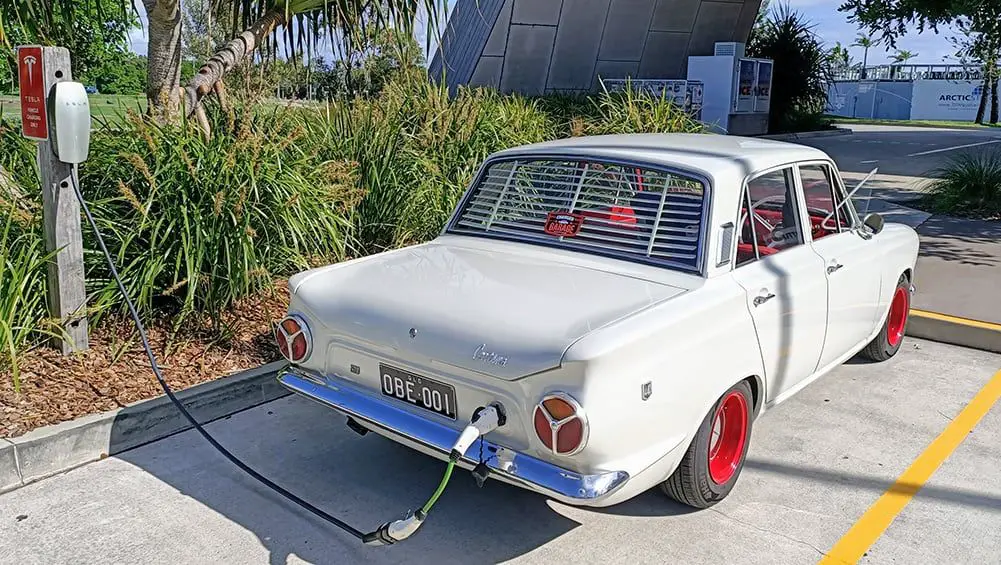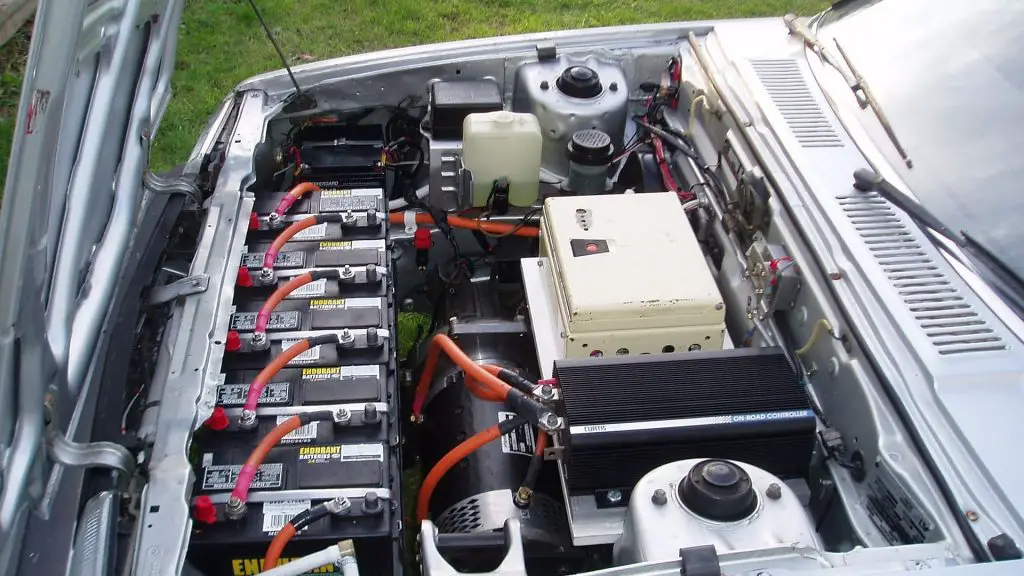Electric Car Conversion: How to Convert a Car to Electric.
The popularity of electric vehicles is on the rise every year. They are perceived to be expensive upfront but the benefits are more rewarding. An electric vehicle conversion is a potentially cheaper way to go electric and ‘future-proof’ your existing combustion-engine car.


The popularity of electric vehicles is on the rise every year. They are perceived to be expensive upfront but the benefits are more rewarding. An electric vehicle conversion is a potentially cheaper way to go electric and ‘future-proof’ your existing combustion-engine car. The reduced running costs of an electric car could also save you money in the long term.
An electric motor weighs far less than a conventional petrol engine, the additional weight of the batteries and their placement will put extra strain on the brakes, suspension, and chassis, while auxiliary systems like the power steering and air conditioning need to be modified.
The basic process for converting a car to electric power involves removing the combustion engine, along with the gearbox, exhaust, and various other components. These are then replaced with batteries and one or more electric motors. There are several ways of converting combustion engines to electric vehicles.
Read: How To Convert A Combustion Car to Electric
The first method is using the electric kit. The kit contains the electric motor, a structure to mount it on, high-voltage cabling, battery mounting plates, power electronics (inverters), onboard chargers, and DC-DC converters.
Another method for EV conversion is using the batteries, motors, and other components from an old mainstream electric car. Popular EVs that have donated their innards for electric car conversions include the Nissan Leaf, Renault Zoe, and numerous Teslas.
If you opt for the Do It Yourself (DIY) method you need to be well-versed with high-voltage electrics and also a high level of relevant knowledge and experience. Choosing to do the conversion yourself enables you to personalize the conversion to fit your own needs and preferences. Conversions are modular, so you can add parts, such as additional batteries at any time, or upgrade the motor and charging capability if you wish. For most conversions, a 120-horsepower motor and a 100-mile range are perfectly adequate, however, if you want better acceleration or an extended range, this can be done too.
Read: How to build your own electric car
One of the main concerns people have about electric cars is how they will perform compared to traditional internal combustion cars. Many people worry that an electric car will not be able to handle things like hills and long distances. However, this is not the case. Converting your car to electric won’t affect its performance in any way. In fact, with more torque and better acceleration than a petrol or diesel model, you’ll be surprised at just how quick your electric classic car can be.
Once you convert your car it is a great way of saving the environment as well as saving money used for fueling your car. Not only is it more sustainable than driving a traditional gas car, but it also comes with lots of other benefits. Best of all, electric cars are a lot of fun to drive. They’re smooth, quiet, and quick off the mark, and with no emissions, you can enjoy a guilt-free driving experience.
Read: Electric Car Maintenance And Service
The time and cost of converting an electric vehicle sorely depends with the complexity of the car to be converted. Also, the features you want to be added to your car play a major role in determining the time required for conversion.
7 basic steps involved in every conversion:
- Remove the dirty, oily parts from the engine bay
- Fabricate battery system boxes and mounts
- Determine where each component will fit
- Secure everything in place
- Wire it all together
- Optimize the drive software for your car
- Run vigorous testing
There are 6 things to consider before converting:
1. Cost
Electric Car Converts can tailor a conversion closely to your budget, it’s an expensive process, but the investment certainly pays itself off when there’s no fuel cost or vehicle tax to deal with! For example, a basic, 100-mile range conversion without power steering or interior heating will be much cheaper than a 300-mile range, 450-horsepower Tesla motor conversion!
2. Performance
The power of an electric conversion is usually significantly higher than its original engine. This means that suspension, brakes, and other parts of the drivetrain may need to be upgraded too. There’s never a doubt that your electric conversion will go from 0-60 faster than the original engine. You need to consider whether you are upgrading the drivetrain enough to need to upgrade other parts of the car.
3. Range
The range of an electric car depends on the size of the battery you choose and how you drive. If you are only going to use your car for short trips, then you may not need a large battery. Electric Car Converts offer a variety of battery options, so you can choose the one that best suits your needs. Also, conversions are completely modular, so if you wish to extend your range at a later date, add another battery box and you can double or triple your EV range!
4. Maintenance
Electric cars require less maintenance than gas-powered cars, but you will still need to perform some basic maintenance to parts beyond the engine. This mostly revolves around brakes, suspension, and the drivetrain. Electric motors only have one moving part therefore only one thing to look after.
Related: How much does it cost to maintain an electric car?
5. Availability of Parts
Classic cars were of course not built for electric power, so various parts need to be replaced or modified to run on electrics. These are things such as brake vacuums, power steering pumps, and cabin heating systems. However, with the growing popularity of electric cars, it is now easier to source parts and accessories both new and used, so finding what’s needed isn’t difficult.
6. Amount of Work Required
Working with classic cars on its own can test your patience, couple this with high-voltage electrical systems and you’re in for a big job, not for the faint-hearted. With classic cars, never underestimate the fact that you’re always one rounded or even snapped bolt away from hours of suffering. It’s important not to rush, voltages can be deadly, so spend the extra time ensuring things are wired up correctly also, make sure you have the time, skills, and tools necessary to do the job properly, or leave it to the experts before you make mistakes.
Here are the top 5 benefits of converting your car to electric:
1. Reduced Emissions
Internal combustion cars produce harmful emissions that negatively impact the environment, converting a classic car to electric power means that it will produce zero emissions and help fight climate change.
2. Running Costs
Electric cars are much cheaper to operate than petrol or diesel cars, so you will save money on fuel costs.
3. Performance
Electric motors have higher performance than their petrol or diesel counterparts. Being electric they have much higher torque from a standstill than a regular engine, this means much faster acceleration. Furthermore, handling is better, due to better weight distribution when batteries are installed around the car.
4. Easier Maintenance
Electric cars require much less maintenance than gasoline or diesel cars, so you will spend less time and money on car repairs. This all comes down to the number of moving parts, as moving parts are what require servicing. Electric motors have one moving part, meaning there are no belts to change, oil to change, or filters to service, for example.
5. Increased Classic Car Value
Converting to electric power will no doubt increase your car’s value. Ultimately, electrification makes classic cars a lot more useable, and therefore people are more likely to pay more for a converted EV.




